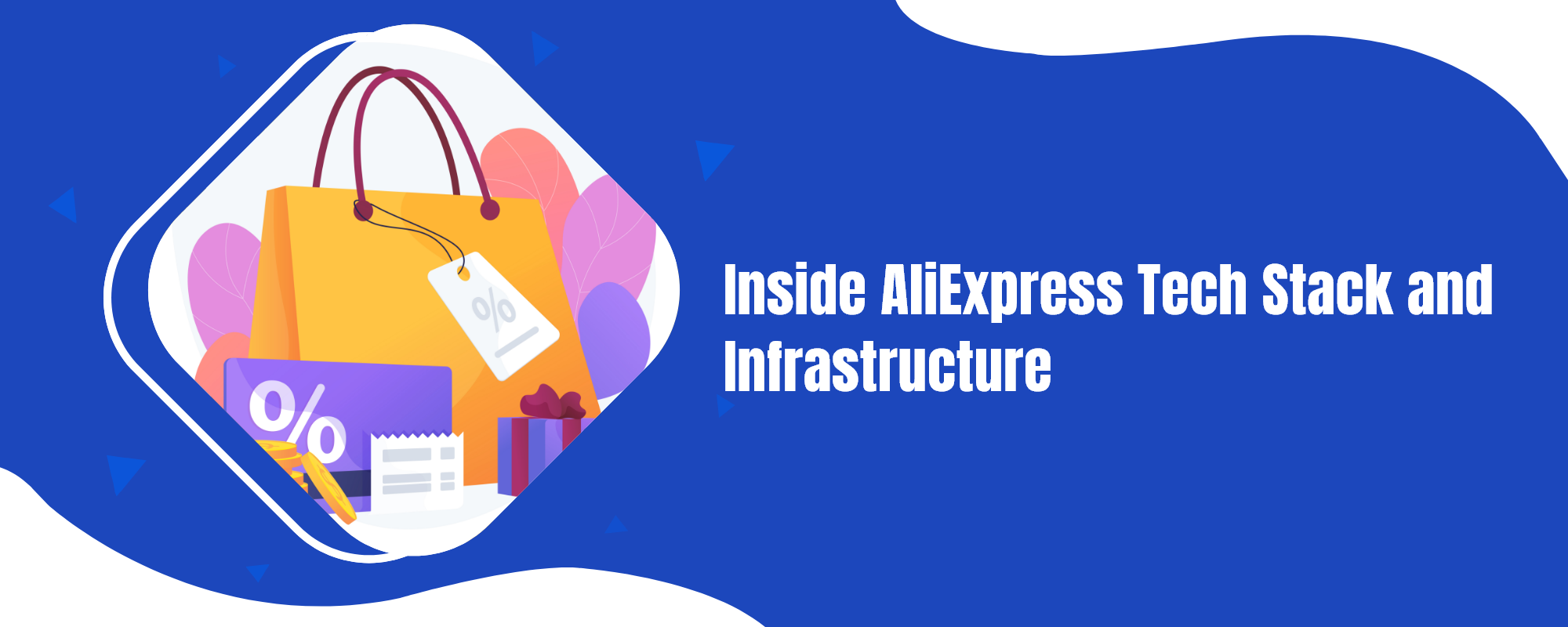Among the giants in the industry, AliExpress, a subsidiary of the Alibaba Group, has managed to carve out a niche for itself with its diverse range of products, competitive pricing, and seamless user experience. At the core of this success is the AliExpress tech stack and cloud infrastructure designed to accommodate the platform’s ever-growing demands. In this article, we delve deep into the technological marvels that power AliExpress, giving you an exclusive look at the inner workings of this e-commerce titan.
From its humble beginnings in 2010, AliExpress has evolved into a global player, serving millions of customers across the world. To keep pace with the ever-increasing volume of transactions, user data, and product listings, AliExpress has continually refined its technological backbone, ensuring optimal performance and scalability.
This article will explore the intricate details of the platform’s tech stack, including programming languages, frameworks, and databases used to build and maintain the platform. Furthermore, we will examine the cloud infrastructure that supports AliExpress, focusing on the company’s transition to Alibaba Cloud and the benefits derived from this strategic move.

Frontend technologies of AliExpress Tech Stack
AliExpress tech stack uses a variety of frontend technologies to provide an engaging and user-friendly shopping experience for its customers. Based on the available information, the primary frontend technologies used in AliExpress tech stack are:
JavaScript: JavaScript is a versatile and widely-used programming language that enables interactive web pages and dynamic content. It plays a crucial role in rendering the user interface, handling user interactions, and ensuring seamless communication between the client-side and server-side of AliExpress.
React: React is a popular JavaScript library developed by Facebook for building user interfaces. It enables the creation of reusable UI components and offers an efficient way to manage the application state. React’s virtual DOM feature enhances the performance of the platform, making it faster and more responsive.
Vue.js: Vue.js is another popular JavaScript framework utilized for building user interfaces. It is known for its simplicity, flexibility, and ease of integration with other libraries and projects. Vue.js might be used in specific sections of AliExpress to create a more maintainable and testable codebase.
Gatsby: Gatsby is a modern website framework built on top of React. It is known for its excellent performance, search engine optimization (SEO) capabilities, and ease of use. Gatsby might be employed in certain parts of AliExpress to create static pages that load quickly and provide an optimized user experience.
Backend technologies of AliExpress Tech Stack
The backend technologies used in AliExpress tech stack include:
Java: AliExpress primarily uses Java as its server-side programming language. Java is known for its platform independence, object-oriented approach, and strong community support. It offers robust libraries and frameworks, which enable efficient and scalable application development.
Apache Tomcat: Apache Tomcat is an open-source web server and servlet container used by AliExpress. It provides a platform to run Java-based web applications and supports various Java technologies such as JavaServer Pages (JSP) and Java Servlets. Tomcat is known for its excellent performance, security, and reliability.
Tengine: Tengine is a web server originated by Alibaba Group. It is based on the popular Nginx web server and is specifically designed for large-scale websites like AliExpress. Tengine provides better performance, stability, and scalability compared to Nginx, making it a suitable choice for AliExpress’s backend infrastructure.
Nginx, Squid, and HAProxy: AliExpress uses a combination of Nginx, Squid, and HAProxy for its HTTP server technologies. Nginx is a high-performance web server and reverse proxy server. Squid is a caching proxy server that helps reduce server load and improve response times. HAProxy is a load balancer and proxy server that enables efficient distribution of network traffic across multiple servers.
Akamai: AliExpress makes use of Akamai‘s content delivery network (CDN) to improve site performance and user experience. Akamai helps in delivering content quickly and securely by distributing it across multiple servers worldwide.

Infrastructure technologies of AliExpress Tech Stack
Some of the key cloud infrastructure technologies used in AliExpress Tech Stack include:
Elastic Compute Service (ECS): ECS provides a scalable, flexible, and customizable virtual computing environment that allows AliExpress to handle large volumes of transactions, efficiently manage resources, and optimize cost through pay-as-you-go pricing.
Object Storage Service (OSS): OSS is a highly scalable and cost-effective cloud storage solution that enables AliExpress to store and retrieve massive amounts of data, including product images, descriptions, and customer information.
Relational Database Service (RDS): RDS is a managed database service that supports various database engines, such as MySQL, SQL Server, and PostgreSQL. This service allows AliExpress to efficiently manage and scale its databases as per the business requirements.
Content Delivery Network (CDN): CDN accelerates the delivery of content to users by caching and distributing it across a globally distributed network of servers. This ensures fast and reliable access to AliExpress’ website and mobile app for users around the world.
Big Data Processing: Alibaba Cloud offers big-data processing solutions that help AliExpress analyze and process large volumes of data to derive valuable insights and optimize its operations. Examples include MaxCompute for large-scale data warehousing and DataWorks for data integration and processing.
Conclusion
The robustness of AliExpress tech stack and cloud infrastructure plays a crucial role in its success as a leading global e-commerce platform. By leveraging cutting-edge technologies such as Java, Node.js, MySQL, and MongoDB, AliExpress has built a scalable and efficient ecosystem that caters to millions of users worldwide.
The utilization of Alibaba Cloud as the backbone of its infrastructure demonstrates the company’s commitment to providing a seamless shopping experience for its customers. With its suite of cloud services, such as Elastic Compute Service, Object Storage Service, and Content Delivery Network, AliExpress can quickly scale to handle traffic spikes and maintain low-latency access to its platform, regardless of the user’s location.
Furthermore, AliExpress’s dedication to security and data protection is commendable, employing measures like multi-factor authentication, encryption, and data redundancy to safeguard users’ sensitive information. The company’s continuous investment in R&D to enhance its tech stack and infrastructure capabilities showcases its determination to remain at the forefront of the e-commerce industry.











